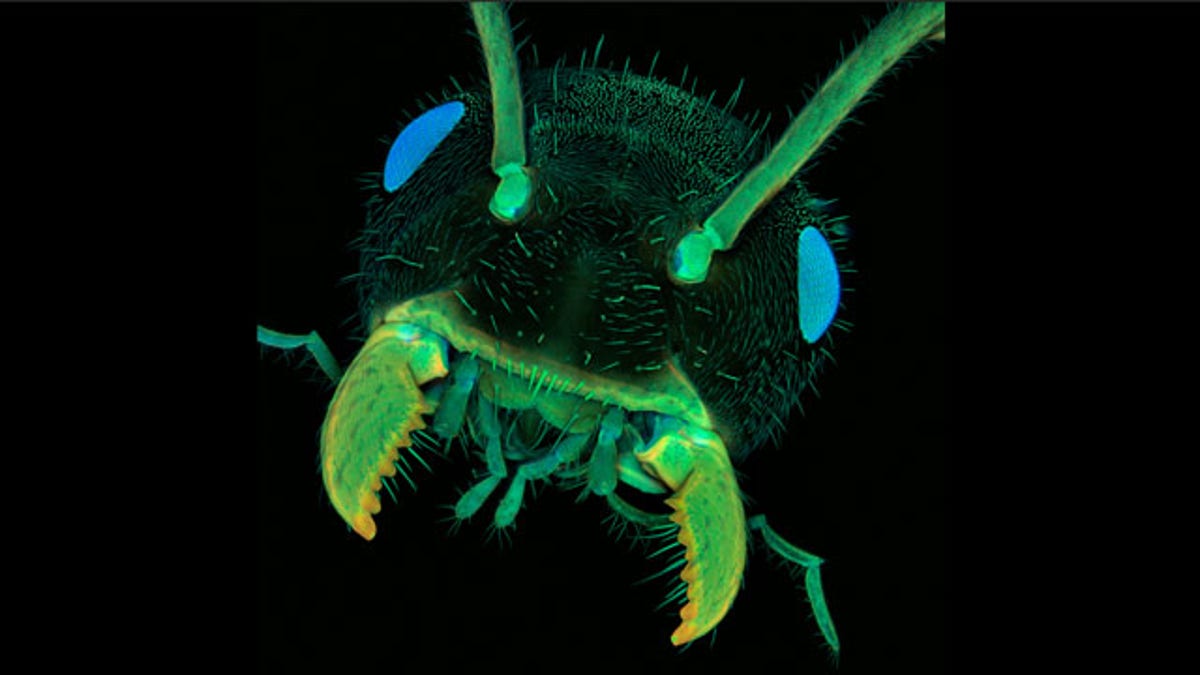
(Dr. Jan Michels/Christian-Albrechts-Universität zu Kiel)
Insects as big as monsters. Fly eyes magnified into screen doors. Grains of salt transformed into colorful boulders from a rainbow-hued volcano.
The winners have just been announced in the 2011 Nikon Small World photomicrography contest, highlighting photographs of ordinary bits of nature captured through a microscope that elevate science into art.
"It's a way to take the work [scientists are] doing -- answering questions in cancer or curing Alzheimer's -- and to show other people the beauty they see," Dr. Simon C. Watkins, founder and director of the University of Pittsburgh Center for Biological Imaging and a judge in this year's contest, told FoxNews.com.
"It's a link between science and art," he said.
The contest has been transformed over the past five years by dramatic changes in optics, technology and technique, experts told FoxNews.com. And you ain't seen nothin' yet.
"If you look at the content, 90 percent of those images could not have been done five or 10 years ago," Watkins said. A big part of that transformation is the massive leap forward taken by digital cameras, where megapixels have replaced darkrooms across the board.
"Imaging sensors and cameras really grew exponentially, with better optics, filter tech, sensors and more," Stephen Ross, head of the bioscience department within Nikon, told FoxNews.com. Those sensors and the ability to record movies let scientists capture scenes they couldn't even imagine before.
Beyond new technology, a Nobel-prize winning leap in the dyes that stain slides has made it possible to see things like never before.
The discovery by Osamu Shimomura, Martin Chalfie, and Roger Y. Tsien of green fluorescent protein dyes swiped from the cells of jellyfish was revolutionary enough to win the 2008 Nobel Prize in chemistry. Photographers gush at what it has made possible.
"You can now assay a protein and see its function and measure things like ions in cells, pH, chloride … and all of that was made possible because of the adaption of jellyfish fluorescent protein," Ross told FoxNews.com.
"The Nobel prize for [green fluorescent protein] was 3 years ago," Watkins said. "What will we be looking at in another 5 years?"
